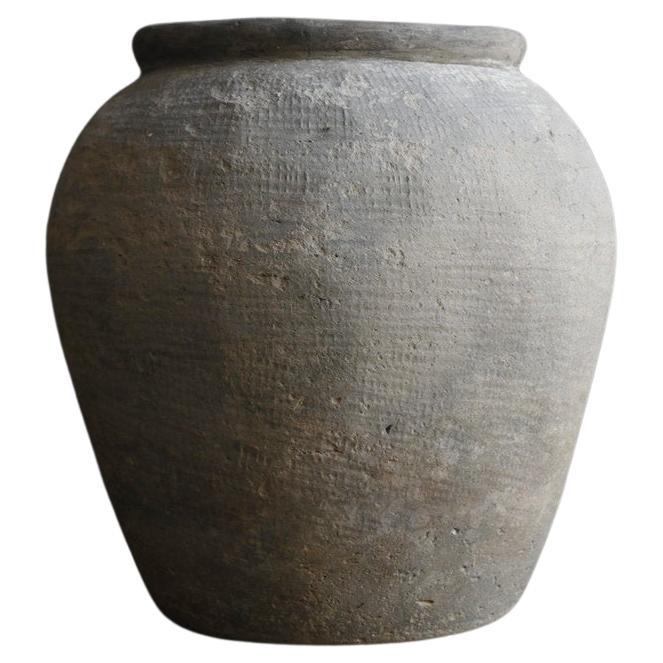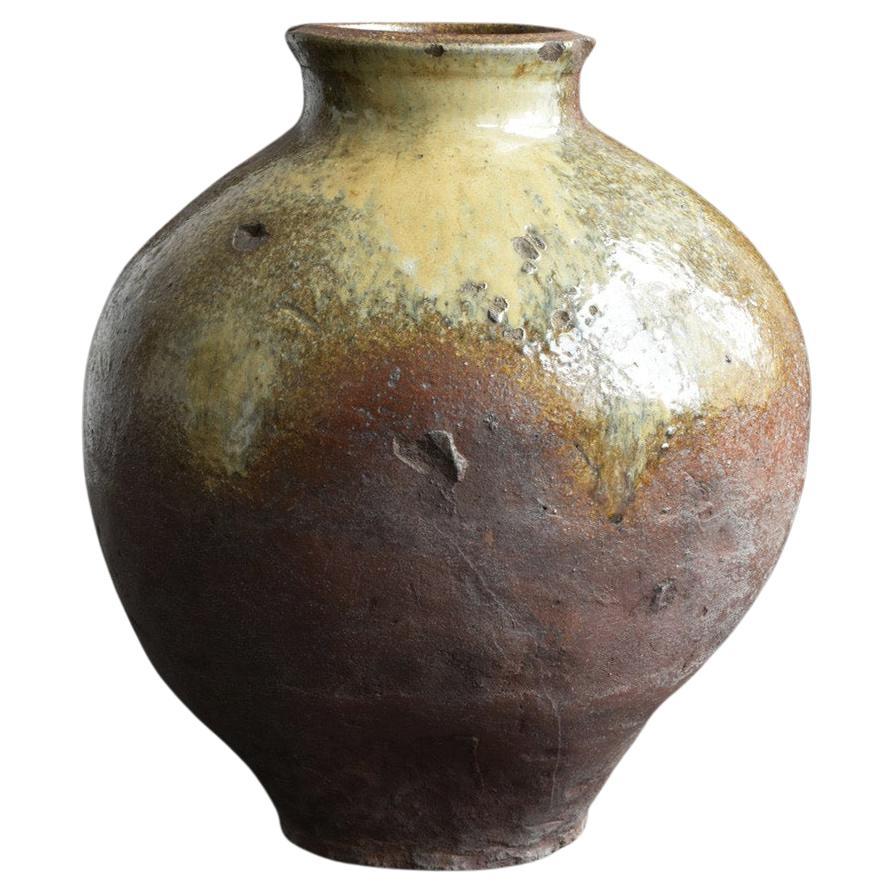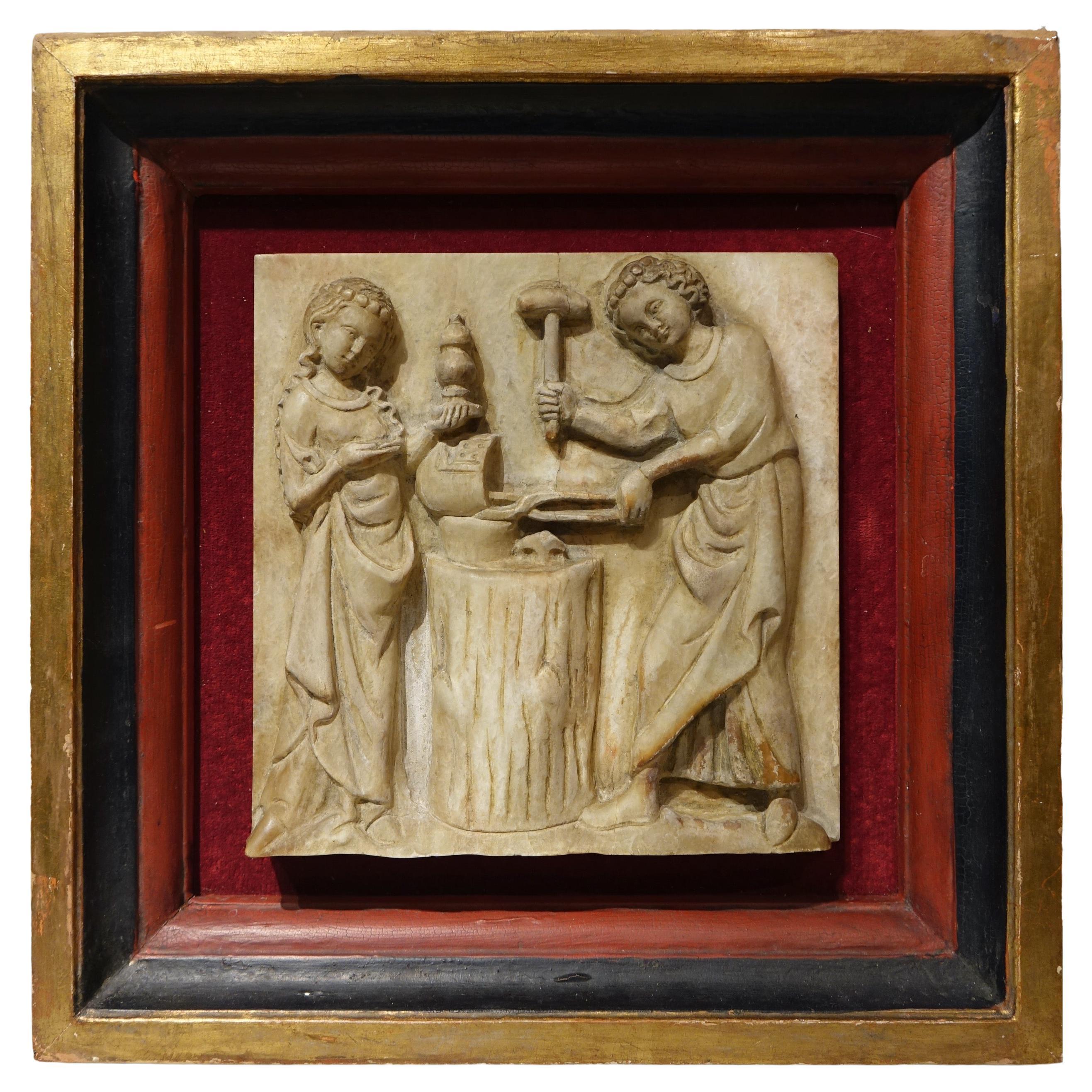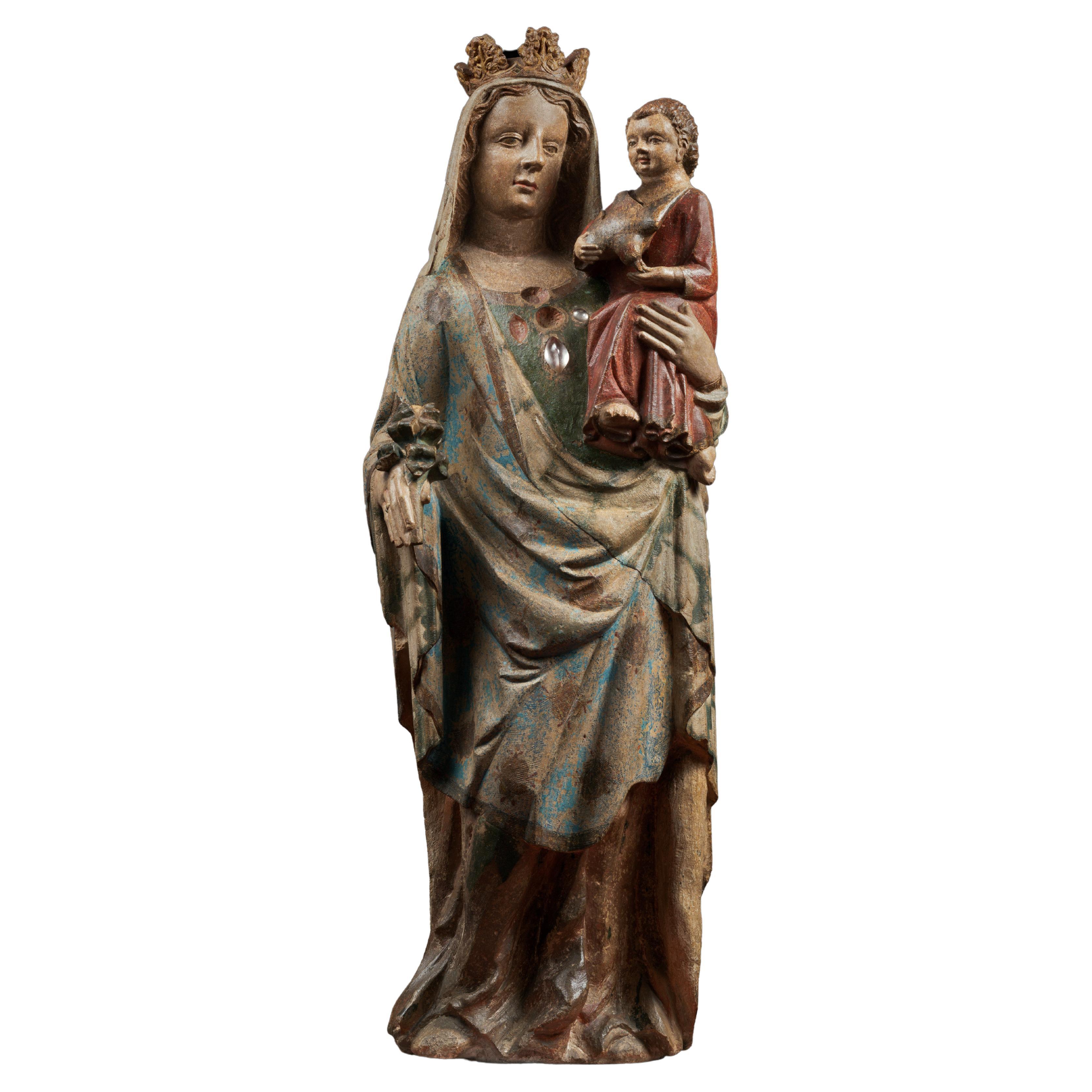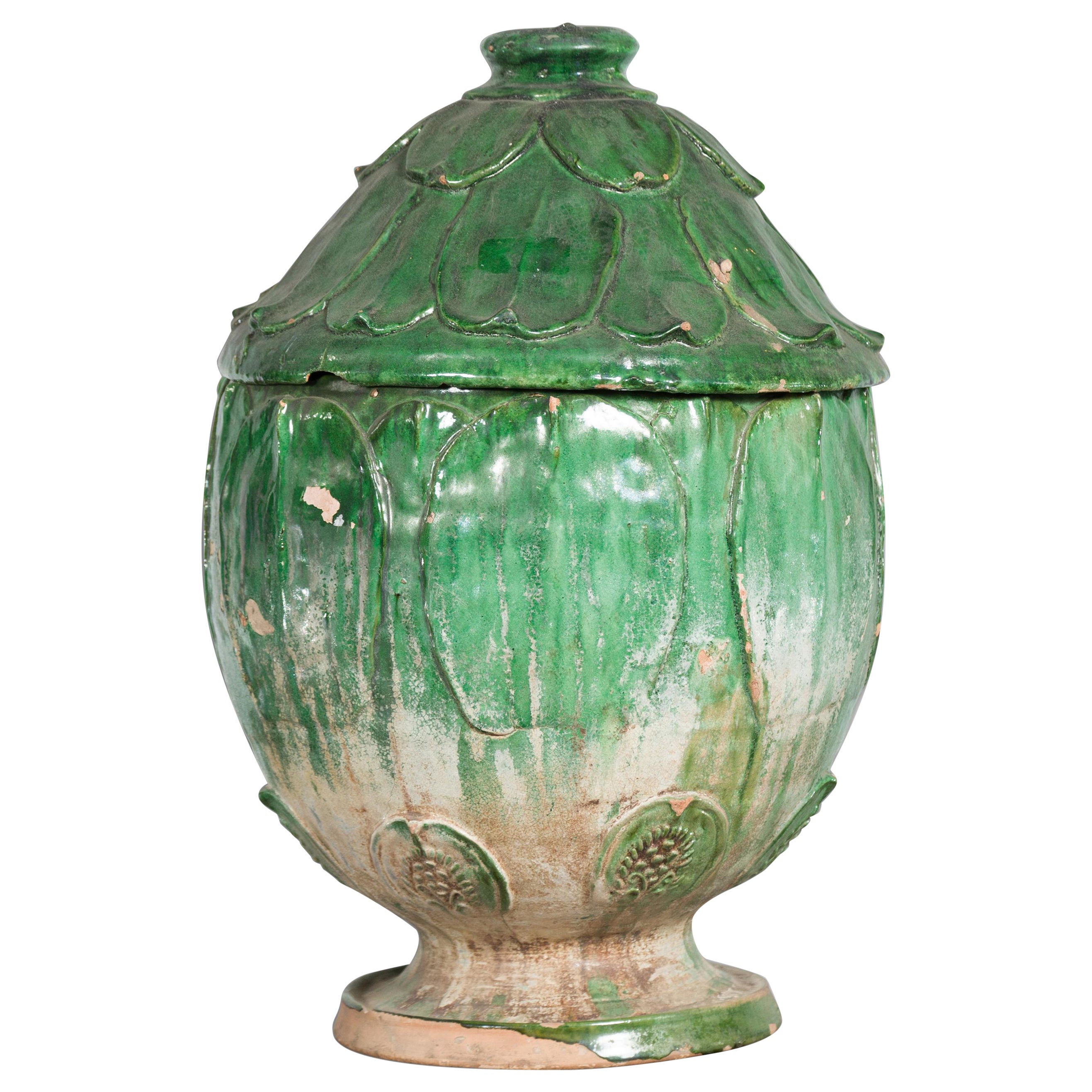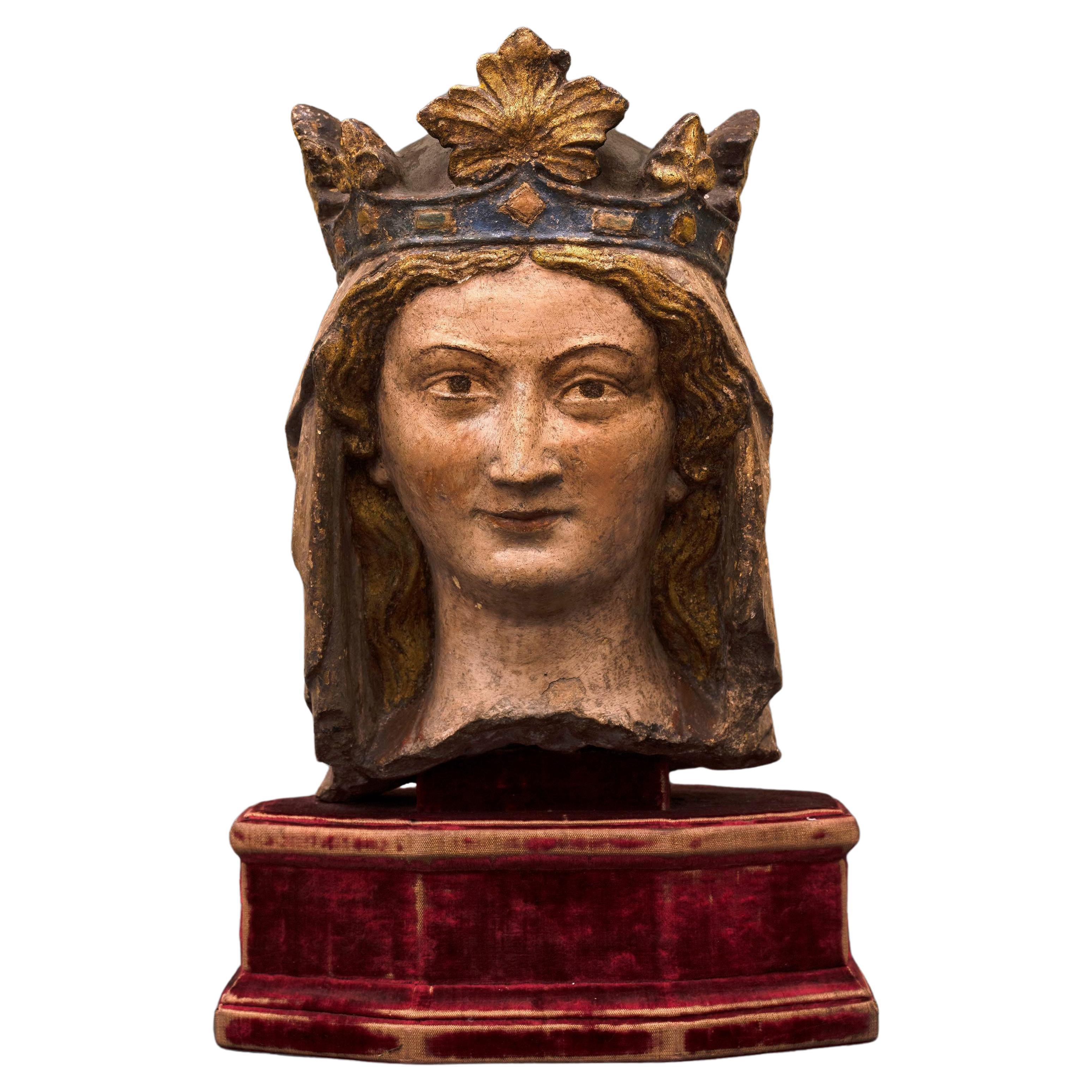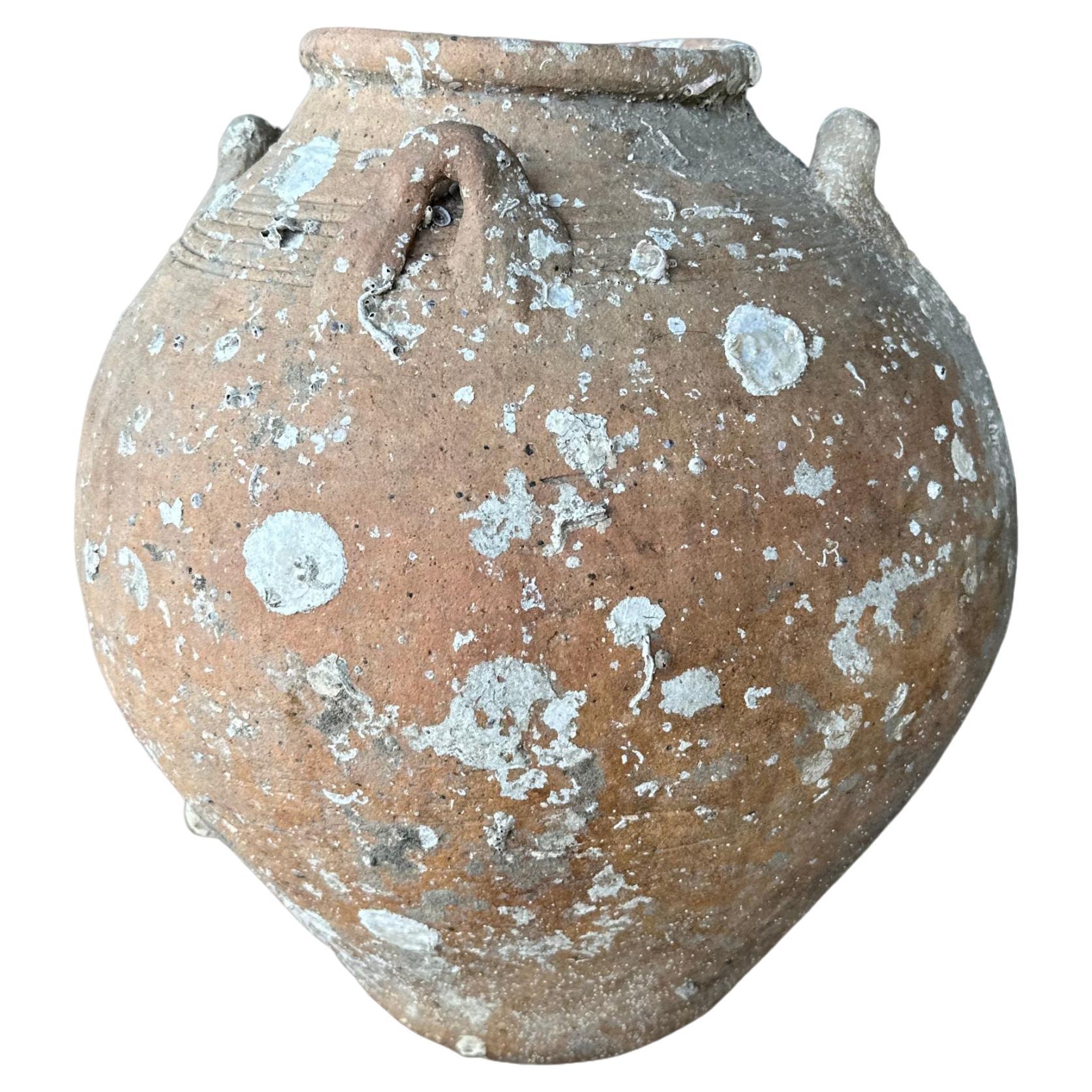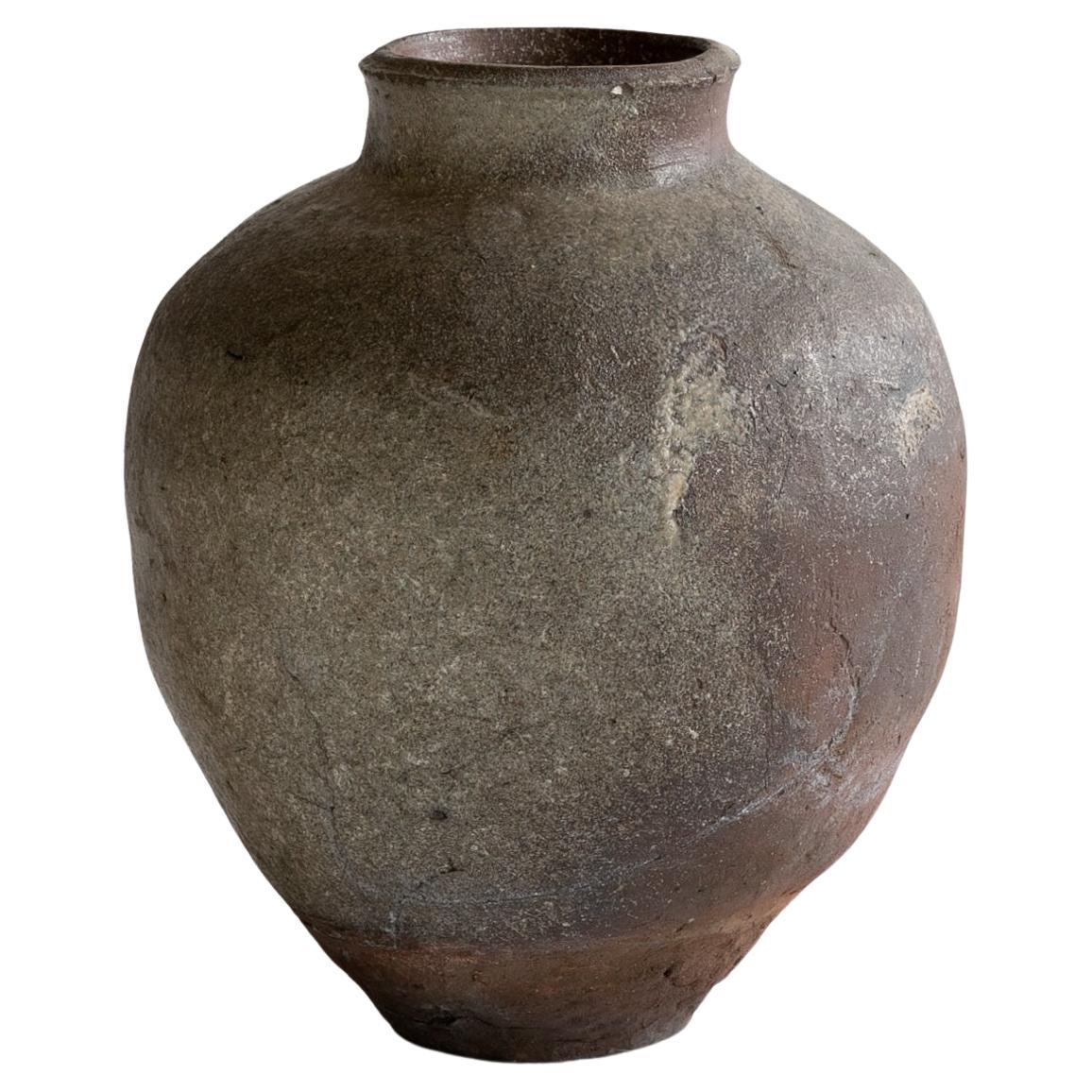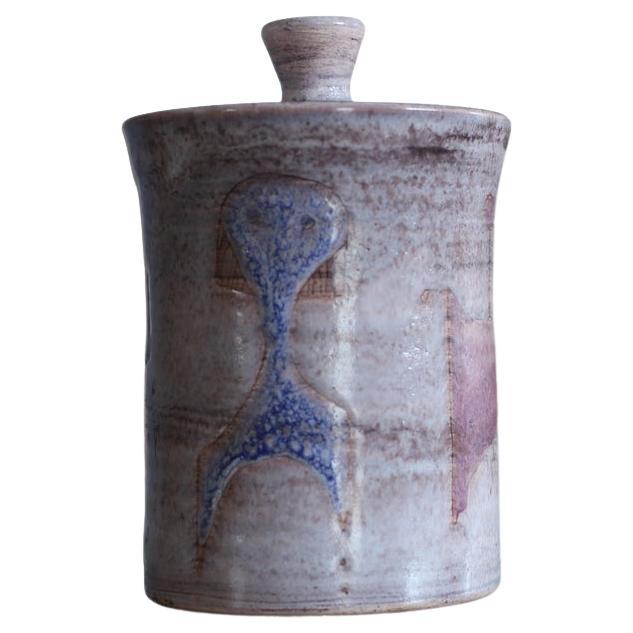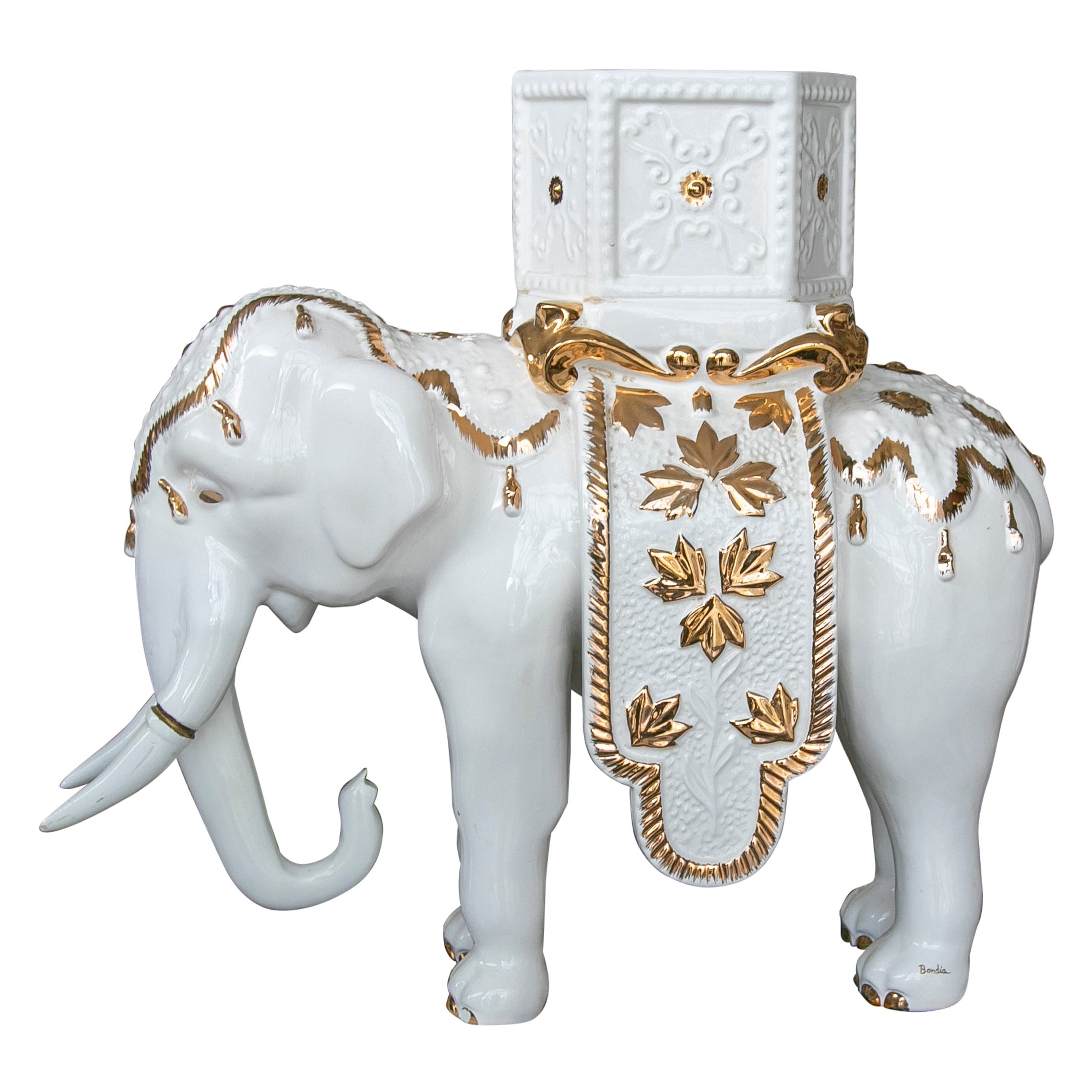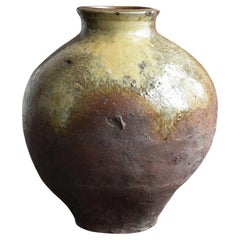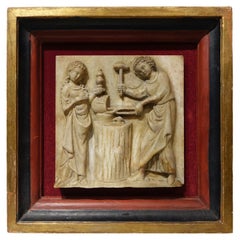
14th Century Sukhothai Ceramic Jar with Fused Pot
View Similar Items
1 of 9
14th Century Sukhothai Ceramic Jar with Fused Pot
About the Item
- Dimensions:Height: 8.67 in (22 cm)Width: 6.89 in (17.5 cm)Depth: 4.53 in (11.5 cm)
- Style:Medieval (Of the Period)
- Materials and Techniques:
- Place of Origin:
- Period:
- Date of Manufacture:circa 1300
- Condition:Wear consistent with age and use. This jar shows signs of frit blasted from fragments of other debris in the firing process. In addition to the fused pot, the adjacent side of the jar has a repair that covers a hole (3cm). The structural integrity is stable.
- Seller Location:Amsterdam, NL
- Reference Number:1stDibs: LU2367318744562
You May Also Like
- Japanese antique pottery Jar/10th-14th century/gray wabi-sabi jar/"Sueki"Located in Sammu-shi, ChibaThis is a very old Japanese pottery. It is thought to date from approximately the 10th century to the 14th century. There is ink writing on the bottom of the jar, but the excavation ...Category
Antique 15th Century and Earlier Japanese Other Jars
MaterialsPottery
- Japanese Antique Natural Glaze Large Jar 14th-16th Century/ "Tokoname"TsuboLocated in Sammu-shi, ChibaTokoname is an area in Aichi prefecture, Japan.(Tokoname Kiln is marked with a red circle on the map.) It was a pottery producing area with a very old history (from around the 12th ...Category
Antique 15th Century and Earlier Japanese Other Vases
MaterialsPottery
- Alabaster high relief, Spain 14th centuryLocated in PARIS, FRAlabaster plate in high relief illustrating a forgeron working on a metal object (a helmet?). A young woman is in front of him holding in her left hand an ovoid vase or reliquary tha...Category
Antique 15th Century and Earlier Spanish Medieval Figurative Sculptures
MaterialsAlabaster
- Khmer Brown Glazed Lidded Stoneware Pot, 12th - 14th Century, CambodiaLocated in Austin, TXAn attractive small Khmer brown glazed stoneware honey or oil pot, 12th to 14th century, Cambodia. The small pot of compressed globular form and glazed in a deep brown glaze with ...Category
Antique 15th Century and Earlier Cambodian Ceramics
MaterialsStoneware
- Important 14th Century Polychrome Limestone Virgin from LorraineLocated in Saint-Ouen, FRProvenance : - Kunsthaus Heinrich Hahn, Frankfurt am Main, sale 16, June 17, 1930, lot 16. - Sotheby's, Amsterdam, Feb. 26, 2006, lot 201. HISTORIC Located between Moselle valley and Meuse valley, framed by the Vosges Mountains on the south side and the duchy of Luxembourg on the north side, the duchy of Lorraine is the result of several partitions. It starts with the 9th century when the Carolingian empire is divided, with Lothar 1st inheriting Lotharingia. In 959 this territory was in turn divided in two; Lower and Upper Lotharingia, the latter being the forebear of the duchy of Lorraine. This duchy was under the rule of the Holy Roman Germanic Empire until 1736 when it was absorbed by the kingdom of France. All along its history the duchy of Lorraine has found itself in the midst of many conflicts. Alliances and feuds marking European history were always particularly sensible in Lorraine where instability was frequent. Because of its geographic position the duchy of Lorraine was also an artistic crossroad. Hence the duchy of Lorraine becomes from the 13th century onwards an important artistic centre where a particular type of Virgin and Child appears. According to professor J. A. Schmoll the characteristics of Lorraine sculpture burgeon around 1280-1300 in the Aube region. It presents “vigorous volumes, restrained movements, rare but solemn gestures and a strong interiorised and stern expression”. Those Virgins look similar with a wide forehead, a shield- or oval-shaped face, large neck, small lips and a cleft chin. This model is particularly in favour during the 13th century because of the revival for Marial worship and for the theme of the Virgin and Child. It bears witness to a new religious sensibility with a more intimate vision of religious practice. DESCRIPTION The important 14th century Virgin we present to you is one of the most beautiful examples of sculptural art from Eastern France, with her fascinating distant gaze. Her contrapposto posture is induced by the weight of the child she carries high on her left side. The child has a chubby face framed by blond hair with well defined curls and he wears a long red V-collared tunic from which emerge his feet. The fabric is animated by long folds. The position of the right foot turned to the back is a detail we can notice on several Virgins from Lorraine. He holds a bird that seems to be pecking his thumb. “The bird /held by the child in his hands/ has been read as a reference to an episode from Christ’s childhood when he has moulded sparrows with clay before giving them life. It appears in the apocryphal gospel of Pseudo-Matthew (ch. 27) and later in the Quran (III, 43, v. 110). However the iconography seems to be more influenced by the concept of Redemption or of Eucharist, the bird symbolising the soul of the Christian about to be redeemed or revitalised.” Mary wears a long dress with two rock crystal cabochons remaining from the original five. She is covered by a red cloak enriched with old-gold motifs draped as an apron falling in long pleats along her left hip. The relief treatment and the volume of the cloak developing a network of concentric pleats contrast with the the flat pleating of her dress. They nevertheless suggest the curve of her bent right leg. She wears a floret crown securing a short thin veil carved in very low relief. From it emerges her blond curled hair characteristic of the 13th century. The large face with almond-shaped eyes, straight nose, small lips and cleft chin casts its gaze afar in a fashion typical of 13th century Virgins. In her right hand she holds a lily flower. In a very refined manner the artist has carved a band on her right ring-finger. In the back, carefully sculpted, spreads the minutely detailed short veil. COMPARATIVE STUDIES This sculpture of great quality presents obvious similarities with Virgins from Lorraine, designated by William Forsythe...Category
Antique 15th Century and Earlier French Gothic Figurative Sculptures
MaterialsLimestone
- 14th Century Yuan Dynasty leaf-green glazed lotus burial jarLocated in Yonkers, NYA 14th century Yuan Dynasty leaf green glazed lotus burial jar with lotus design, lid and nicely distressed appearance. Created in Yuan Dynasty this terraco...Category
Antique 18th Century Chinese Qing Jars
MaterialsTerracotta
